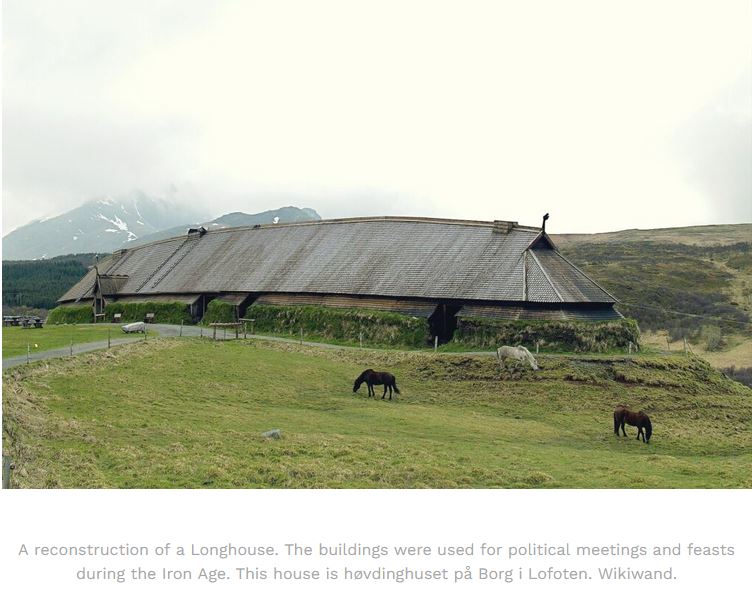500 BCE to 1100 CE - The Nordic Iron Age
The Nordic Iron Age is marked by a number of developments:
– Iron mastery bolstered the warrior class
– Farms grew larger through the existence of better farming implements, some farms grew into important centres of great power; famous Scandinavian longhouse appeared.
– People accumulated wealth. Distinct power structures emerged with small elites ruling over “territories”
– The was increasing contact between Scandinavia and other European countries due to trade and raiding.
– Slavery was introduced
– Extravagent burial practices emerged for the welathy and powerful
– Large migrations of Nordic people within Scandinavia and abroad (often referred to as “Barbarian Invasions” ) Angles, Saxons and Jutes (3 Danish groups) spread to Britain (where they became known as Andlo-Saxons)
– Runes were developed.
– Silver emerged as a commodity; particularly as a symbol of wealth and power
By the end of the iron age Scandinavia had largely transitioned to Christianity
Also late in the Iron Age there were massive volcanic eruptions, recorded to have dimmed the sun, which might have influenced the creation of the tale of Ragnorok.
